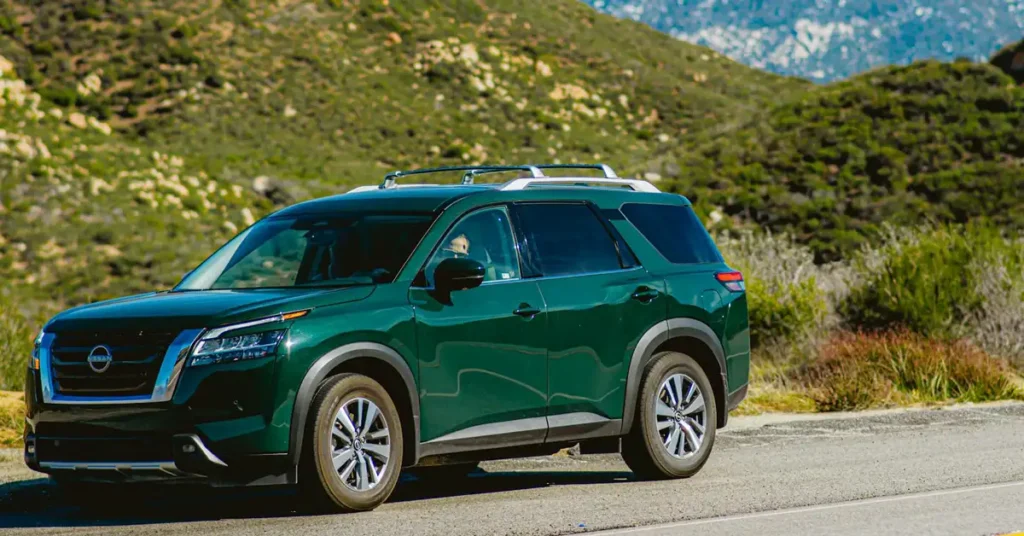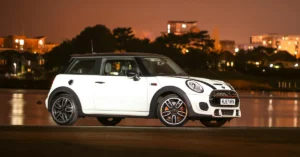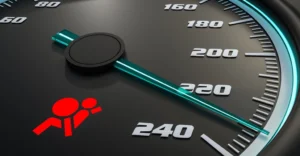The Nissan Pathfinder has long lived a double life part dependable family hauler, part rugged off-roader. It’s the kind of SUV that can do the school run on Monday and tackle a gravel trail by Friday. But here’s the thing: not every Pathfinder lives up to its adventurous reputation. Some generations have proven near bulletproof, while others… well, they’ve left owners stranded with flashing dashboard lights and hefty repair bills.
If you’re eyeing a used Pathfinder or simply curious about how yours measures up, this guide breaks down the best and worst Pathfinder years, the most common problems, and what you can do to keep your SUV performing like it did the day it rolled out of the factory.
What You’ll Learn in This Guide
In this MotorHub reliability breakdown, you’ll discover:
- Which Pathfinder years are worth buying (and which to avoid)
- The story behind the infamous “strawberry milkshake” transmission disaster
- Common mechanical and electrical issues that plague certain generations
- Preventive maintenance tips to push your SUV past the 300,000 km mark
- How it stacks up against rivals like the Toyota Highlander and Ford Explorer
A Quick Look at the Nissan Pathfinder’s Legacy
The Pathfinder’s story begins in the late 1980sa time when SUVs were more grit than gloss. Back then, the first-generation Pathfinder was a body-on-frame bruiser that earned its stripes in mud, sand, and snow. The second-generation models of the early 2000s kept that toughness alive, but as family buyers started demanding comfort and tech, Nissan began softening the edges.
By the 2010s, the Pathfinder had evolved into a smooth-riding, crossover-style SUV more suburban than safari. The problem? The more Nissan added complexity (CVT transmissions, advanced sensors, infotainment tech), the more reliability started to wobble.
Still, the nameplate’s DNA strength, practicality, and versatility remain intact. The key is knowing which years delivered on that promise and which ones missed the mark.
The Best Nissan Pathfinder Years
Some Pathfinders are legendary for their durability, simplicity, and longevity. These are the model years most owners still swear by:
2000 Nissan Pathfinder
The second-generation Pathfinder is a classic built like a truck, powered by a 3.3-liter V6, and engineered for longevity. It’s simple, strong, and easy to service. Even two decades later, many of these are still on the road doing school runs or off-road expeditions.
Why it’s a keeper: bulletproof mechanicals, minimal electronics, and true 4WD ability.
2012 Nissan Pathfinder
The last model year before Nissan switched to the controversial CVT gearbox. The 2012 version is widely considered the most reliable of the third generation blending solid comfort with tried-and-tested mechanics.
Why it stands out: refined ride quality, reliable drivetrain, and fewer reported issues compared to earlier 2000s models.
2022 Nissan Pathfinder
Fast-forward to the present. The all-new 2022 Pathfinder marked Nissan’s redemption arc. It ditched the CVT for a conventional 9-speed automatic and reintroduced the boxier, tougher styling fans loved. Build quality, tech, and reliability all saw major upgrades.
Why it’s worth considering: powerful 3.5L V6 engine, improved transmission durability, and balanced comfort-performance mix.
The Nissan Pathfinder Years to Avoid
Now for the tricky part. Not all Pathfinders were made equal. Certain model years particularly mid-2000s and early 2010sdeveloped serious reliability issues that owners and mechanics alike still talk about.
2005–2007 Models
These years are infamous for what the internet calls the “strawberry milkshake” problem. A design flaw allowed coolant from the radiator to leak into the transmission fluid, creating a pink, milky mess that destroys the gearbox from the inside out. Add timing chain rattles, faulty fuel gauges, and electrical gremlins, and you’ve got the least reliable era in Pathfinder history.
Problem: coolant-contaminated transmission fluid causing total gearbox failure.
Solution: replace the radiator and transmission cooler proactively; flush transmission fluid every 40,000 km to avoid cross-contamination.
2013–2015 Models
When Nissan rolled out the fourth-generation Pathfinder, it came with a new look and a problematic CVT transmission. Owners reported shuddering, jerky acceleration, and delayed response under load. Airbag sensor faults and corrosion issues made matters worse.
Problem: CVT shuddering, slipping, and unpredictable acceleration.
Solution: change CVT fluid every 40,000 km, ensure recall work is completed, and avoid towing heavy loads frequently.
Common Nissan Pathfinder Problems (and How to Fix Them)
Beyond those troublesome years, there are a few issues that have affected Pathfinders across multiple generations. The good news? Most are preventable with proper maintenance.
a. Transmission Failures
From radiator leaks in older models to CVT shuddering in newer ones, transmission problems are the most expensive fixes. Stick to regular fluid changes and use OEM parts during service. Never ignore early warning signs like jerking or whining noises they usually mean trouble brewing.
b. Fuel System Faults
Faulty fuel sending units are notorious for causing inaccurate readings, sometimes leaving drivers stranded mid-journey. If your fuel gauge behaves erratically, don’t waitget the sensor replaced.
c. Timing Chain Noise
A rattling or buzzing sound from the engine bay (especially on startup) usually points to timing chain wear. This is common around 130,000 to 175,000 km. Early replacement prevents expensive engine damage.
d. Airbag and Electrical Issues
Airbag sensors, flickering dashboards, and false warning lights were frequent complaints in 2013–2015 models. Always confirm that recall repairs were performed before buying a used one.
Recommended Preventive Maintenance Services
Keeping a Pathfinder reliable isn’t rocket scienceit’s about consistency.
Here’s what experts and long-term owners recommend:
- Transmission fluid change: every 40,000 km (especially critical for CVTs)
- Coolant flush: every 50,000 km to prevent radiator contamination
- Timing chain inspection: around 130,000 km
- Fuel system cleaning: periodically to protect injectors and fuel pumps
- Airbag & electrical check: during every major service interval
“A well-maintained Pathfinder isn’t just reliable it’s nearly unstoppable. Some owners report over 350,000 km with only routine servicing when they stay on schedule.”
Pathfinder vs. Rivals: Toyota Highlander and Ford Explorer
| Model | Engine | Drivetrain | Reliability Rating | Cargo Space | Notable Issues |
| Nissan Pathfinder | 3.5L V6 | AWD | 3.5/5 | 470 L | Transmission and CVT issues (older models) |
| Toyota Highlander | 3.5L V6 / Hybrid | AWD / FWD | 4.5/5 | 455 L | Minimal issues; top-tier reliability |
| Ford Explorer | 2.3L Turbo / 3.0L V6 | AWD | 3.8/5 | 515 L | Gearbox wear and electronic faults |
In real-world terms, the Pathfinder shines in comfort, towing, and versatility. But when it comes to bulletproof dependability, the Highlander often edges ahead. That said, the 2022 and newer Pathfinders have closed the gap significantly bringing reliability back to where it belongs.
Final Thoughts: Why the Pathfinder Still Deserves Your Trust
Despite a few bumpy chapters in its history, the Nissan Pathfinder remains one of the most versatile and well-balanced SUVs you can buy. It’s a vehicle that’s grown from a rugged off-roader into a confident, comfortable family cruiser and with the latest generations, Nissan has clearly learned from past missteps. The 2022 and newer Pathfinders prove that reliability and refinement can coexist, offering the strength to handle long desert drives and the comfort for everyday commutes. With regular maintenance and a bit of mechanical mindfulness, your Pathfinder can easily deliver years of dependable performance true reminder that adventure and reliability can, in fact, share the same road.
Frequently Asked Questions
- Is the Nissan Pathfinder reliable?
Yes, especially 2020 and newer models. Earlier years (2005–2007, 2013–2015) had known mechanical issues. - Does the Nissan Pathfinder handle well off-road?
Yes especially older, body-on-frame models (pre-2013) and the newer 2022+ versions with intelligent 4WD. While mid-generation models leaned more toward urban comfort, the latest Pathfinder has regained solid off-road traction, hill descent control, and selectable drive modes for sand, mud, and gravel. - What’s the average lifespan of a Nissan Pathfinder?
With proper maintenance, Pathfinders can easily cross 300,000 km and still run strong. Regular fluid changes, timely timing chain inspections, and radiator upkeep are key to longevity. Many owners report reaching over a decade of ownership with minimal issues.
- Is the Pathfinder expensive to maintain?
Not really. While parts like the CVT or timing chain can be pricey if neglected, routine service costs are reasonable compared to rivals. Following the manufacturer’s maintenance schedule and using genuine parts will keep expenses predictable and reliability high. - Does the Nissan Pathfinder have any air conditioning or cooling issues in hot climates?
Some older models (2005–2010) struggled with radiator leaks and A/C compressor wear, especially in extreme heat. Newer Pathfinders, however, come with upgraded cooling systems that perform well even in Middle Eastern or desert conditions. - How does the Pathfinder’s fuel efficiency compare to similar SUVs?
The Pathfinder’s 3.5L V6 delivers decent efficiency for its size averaging around 10–11 L/100 km in mixed driving. It’s not the most fuel-efficient in its class, but it balances performance, towing ability, and long-distance comfort better than many competitors. - Are there any major recalls I should know about?
Yes, certain years (especially 2013–2015) were recalled for airbag sensor faults, CVT issues, and hood latch concerns. Always check a used Pathfinder’s VIN with Nissan’s recall database to confirm that all necessary updates have been completed before purchase.
MotorHub UAE Insight: Keeping Your Pathfinder Road-Ready
Owning a Pathfinder in the UAE isn’t just about reliability it’s about resilience. Extreme heat, sand, and stop-start city driving all take a toll on transmissions and cooling systems.
At MotorHub UAE, our certified technicians specialize in Nissan Pathfinder servicing from CVT repairs and radiator replacements to cooling system maintenance and injector cleaning. Whether you’re exploring desert dunes or navigating Dubai traffic, we’ll keep your Pathfinder smooth, powerful, and ready for whatever comes next.



